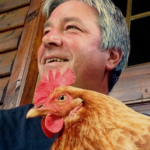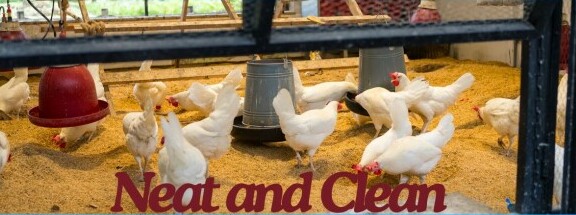
Have you ever come in from the pouring rain and needed to take your wet clothes off so you could get comfortable? You wouldn’t grab dry clothes and go back out in the rain to do it, would you? No. You would want a dry, comfortable, relaxed, and nonpublic place to change.
Just like humans need a comfy space to relax, chickens need the right habitat to get through their molting phase smoothly. A good molting habitat can make all the difference in their health and happiness.
If chickens have a proper place to molt, it helps them stay healthy. During molting, their immune systems can weaken, making them more susceptible to illnesses. A good environment minimizes stress and keeps them from falling sick too easily.
Think of the stress-free environment as a spa for chickens. Less stress means better mental health for your chicken friends. When chickens feel safe and relaxed, they molt more efficiently. This boosts their happiness and well-being, which is essential for every backyard chicken keeper.
The quality of a molting habitat directly affects feather regrowth. Feathers aren’t just for show; they keep chickens warm and help regulate their body temperature. A supportive habitat aids in faster and healthier feather regrowth, which means your chickens return to their beautiful, fluffy selves sooner.
One less-talked-about benefit is how a good molting setup can impact egg production. Even though chickens usually stop laying eggs during molting, a comfortable environment can speed up the process, getting them back to laying eggs quicker.
Better habitat = happier hens = more eggs.
Characteristics of an Ideal Molting Habitat for Chickens
An ideal molting habitat for chickens covers all the essentials: safety, comfort, and good hygiene. Cleanliness is key. Molting makes chickens more vulnerable to infections, so a clean environment reduces this risk. Regularly clean the coop, change bedding, and ensure food and water dishes are spotless.
Enough space is crucial. During molting, chickens might avoid their flock mates, preferring personal space and less interaction. Make sure the coop or run has enough room for everyone to spread out and chill without feeling cramped.
Proper nutrition and hydration play significant roles. Molting requires a lot of energy and nutrients. Offer high-protein feed to help with feather regrowth. Fresh water is a must. Dehydration can slow the molting process and impact overall health. Supplementation can really boost feather regrowth.
Temperature and lighting also need attention. Chickens prefer moderate temperatures, especially when they’re vulnerable. Too hot or too cold can stress them out. If you provide temperatures in the sixties and seventies, that will be perfect.
Opt for natural or soft, artificial light to create a peaceful setting.
Dust baths and enrichment activities provide more than just fun. Dust baths help keep them clean and parasite-free, while enrichment activities like pecking toys keep their minds active and reduce stress.
Finally, a predator-free environment is non-negotiable. During molting, chickens are less able to escape predators. Secure the coop with foolproof methods, such as locks, blockades, or electrification, and check for any potential entry points for unwanted guests like weasels and mink.
Identifying Poor Molting Habitats and Their Consequences
Poor molting habitats have common red flags. Overcrowded spaces, dirty coops, and a lack of proper nutrition can make the molting period tough for chickens. Identifying these issues early can help you make the necessary changes.
Health risks are unavoidable in bad molting environments. Dirty or damp areas are breeding grounds for bacteria and parasites, making illnesses more common. Chickens in such conditions are prone to respiratory issues and infections, significantly affecting their health.
Stress and discomfort during molting can be disastrous. When chickens are stressed, it slows down feather regrowth and weakens their immune systems. If you notice them being irritable or hiding more than usual, their environment might be stressing them out.
Signs that chickens are not thriving include unusual behavior like loss of appetite, excessive pecking, or visible distress. Physical signs such as thin or patchy feathers and pale combs indicate the molting process isn’t going well.
Improving poor molting conditions doesn’t have to be complicated. Start by cleaning and making the coop more spacious. Add extra food and water stations to reduce competition. Introduce some high-protein treats to their diet. Even small changes can make a significant difference.
Neglecting proper molting care can have long-term effects. Chronic stress and poor health during molting can weaken chickens over time. Ensuring a good molting habitat isn’t just a one-time fix; it’s about preventing future problems and keeping your flock healthy year-round.
Please leave any questions you have below.
Dave

Chickenmethod.com

